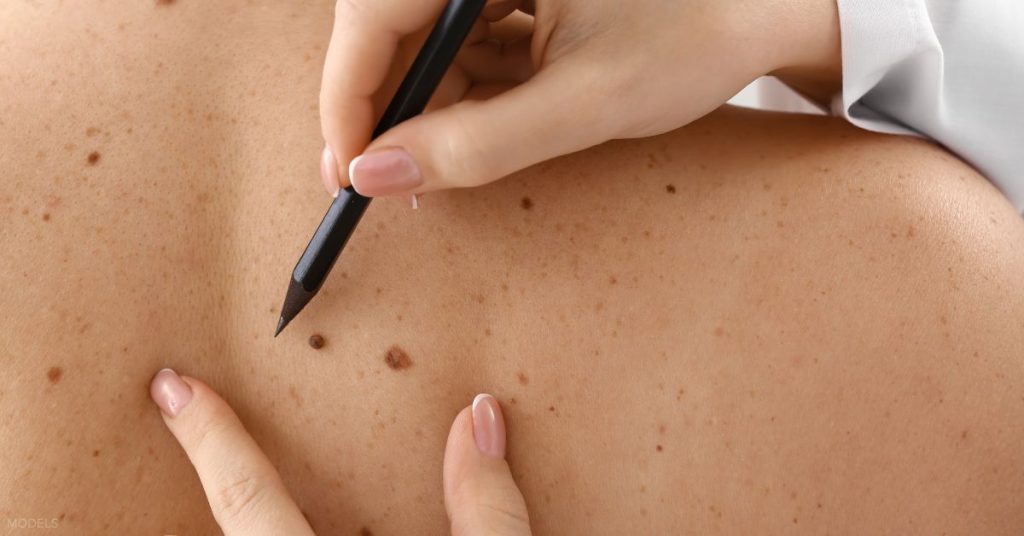Advances in skin cancer care now give patients more choices than ever, offering solutions that prioritize both effectiveness and cosmetic results. At The Clinic for Dermatology & Wellness, patients have access to some of the latest skin cancer treatments, ranging from trusted surgical methods to innovative nonsurgical therapies.
The Importance of Skin Cancer Screening
Regular skin cancer screening catches concerns earlier, which typically means simpler treatment and better cosmetic results. Advances in imaging, surgery, and light-based therapies now make it possible to precisely target tumors, spare healthy tissue, and streamline recovery. If it’s been a year (or longer) since your last full-body exam, consider this your reminder to get on the calendar.
1. Mohs Surgery: The Gold Standard for Many Cases
Mohs micrographic surgery removes skin cancer in stages. Each thin layer is examined under a microscope until no cancer cells remain.
The leading benefits of Mohs surgery include:
- Exceptionally high success rate, often cited in the 98% to 99% range for many basal and squamous cell cancers
- Tissue-sparing approach that helps preserve function and appearance in areas like the nose, eyelids, lips, ears, hands, and feet
- Convenience of local anesthesia in an outpatient setting
Best fit: Aggressive, recurrent, or ill-defined tumors; cancers in cosmetically or functionally sensitive sites.
2. IG-SRT (GentleCure): A Precise, Nonsurgical Alternative
GentleCure IG-SRT treatment (image-guided superficial radiation therapy) uses low-energy X-rays guided by ultrasound imaging to target nonmelanoma skin cancers precisely, with no incisions or stitches.
The key advantages of IG-SRT include:
- Real-time visualization and accurate targeting
- Noninvasive treatment with no anesthesia, cutting, or sutures, allowing minimal disruption to daily routines
- Favorable outcomes because healthy skin is spared
Best fit: Patients who prefer a noninvasive option, have multiple lesions to treat, or want to minimize scarring concerns. Your dermatologist will help you compare Mohs vs. IG-SRT based on the cancer type, size, location, and behavior.
3. Photodynamic Therapy (PDT): Light-Activated Precision
PDT pairs a photosensitizing medication, aminolevulinic acid (ALA), with a specific light source to selectively destroy precancerous and some superficial cancer cells.
Some top benefits of PDT include:
- Especially helpful for actinic keratoses treatment across sun-exposed areas
- Targeted effect with minimal injury to the surrounding healthy skin
- Office-based protocol with predictable recovery
Best fit: Widespread or field treatments for precancers and certain superficial lesions your provider deems appropriate. Learn more about PDT benefits and recovery.
4. Traditional Excisional Surgery: Simple and Effective
This procedure surgically removes the visible tumor with an appropriate “margin” of healthy skin. The tissue is then analyzed to confirm clear margins.
The chief advantages of traditional excisional surgery include:
- Straightforward approach suitable for many well-defined, lower-risk tumors on the trunk and extremities
- Often completed in a single visit with local anesthesia
- Widely available and time-tested as a standard treatment option
Best fit: Lesions that are small, nonaggressive, and in areas where a slightly wider margin is acceptable.
How To Choose the Right Treatment for You
There isn’t a single “best” approach for everyone. Your ideal plan depends on:
- Cancer type and behavior
- Size and location
- Cosmetic priorities and lifestyle
- Medical history and prior treatments
Choosing the right approach is a collaborative process with your dermatologist. With expert guidance, you can weigh the pros and cons of each option and move forward with a treatment plan that supports your health and peace of mind.
Don’t Wait: Fall Is a Smart Time To Act
Shorter days, less sun exposure, and a natural reset in routines make autumn a practical season for both screening and treatment. Whether you’re deciding between Mohs and IG-SRT, exploring PDT for widespread sun damage, or scheduling a straightforward excision, taking action now sets you up nicely for winter and beyond.
What’s Next?
Get started by calling our office today at (541) 200-2777 or requesting a consultation using the online form.

Leave a Reply